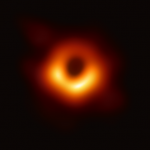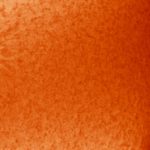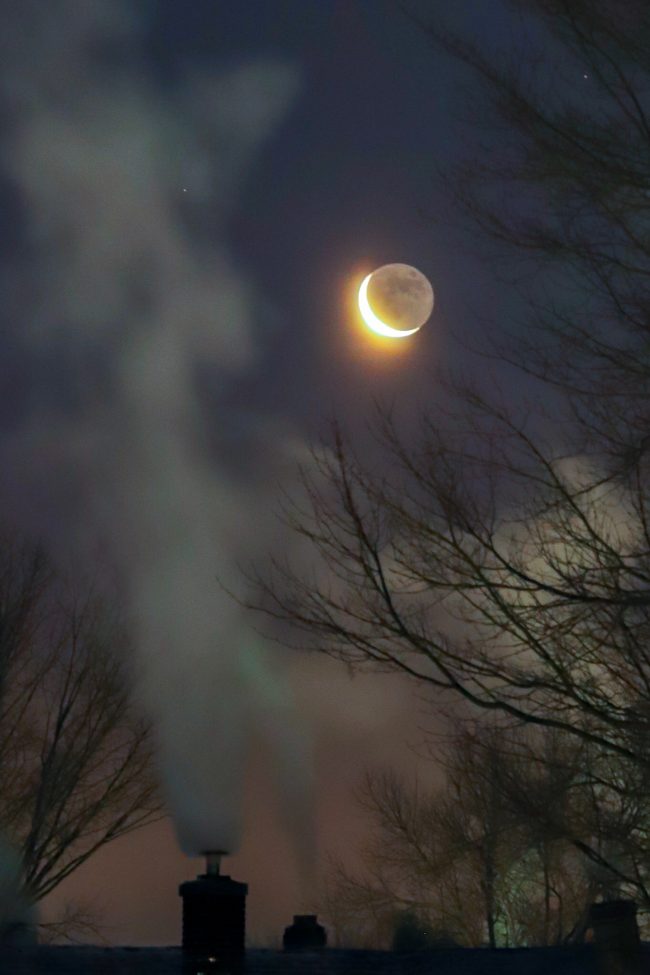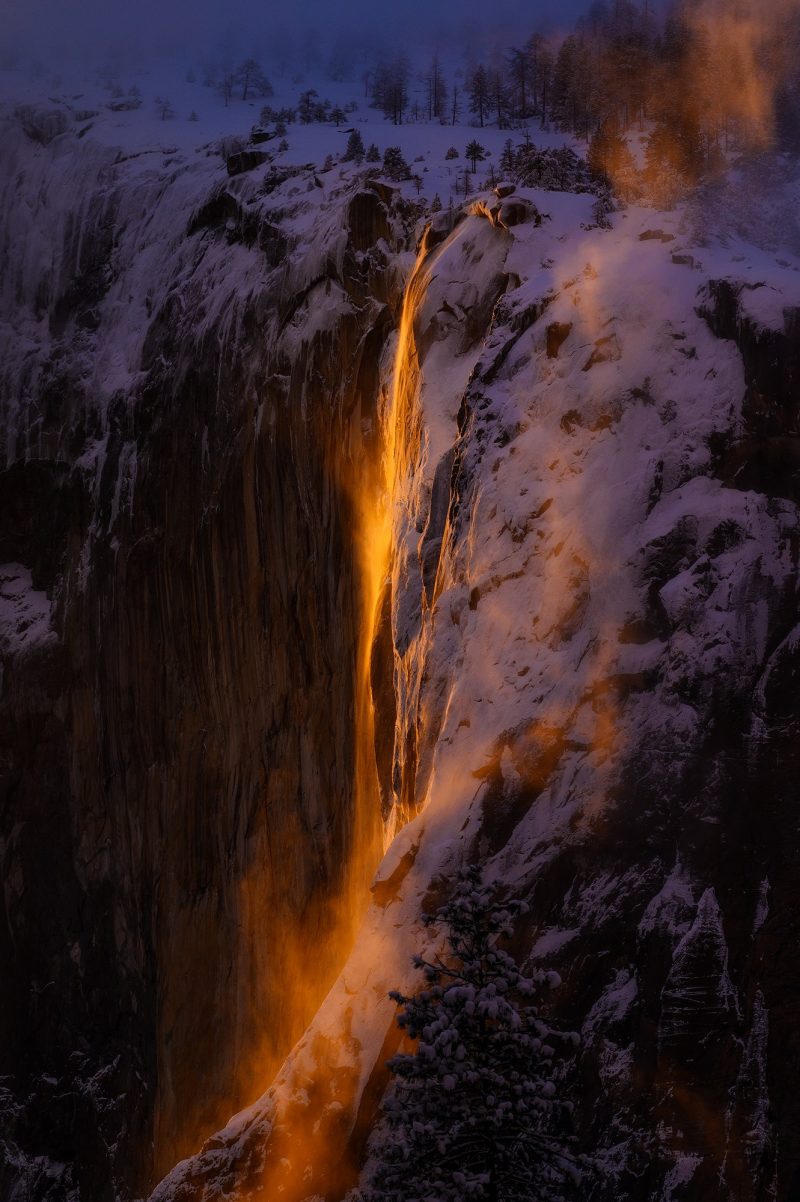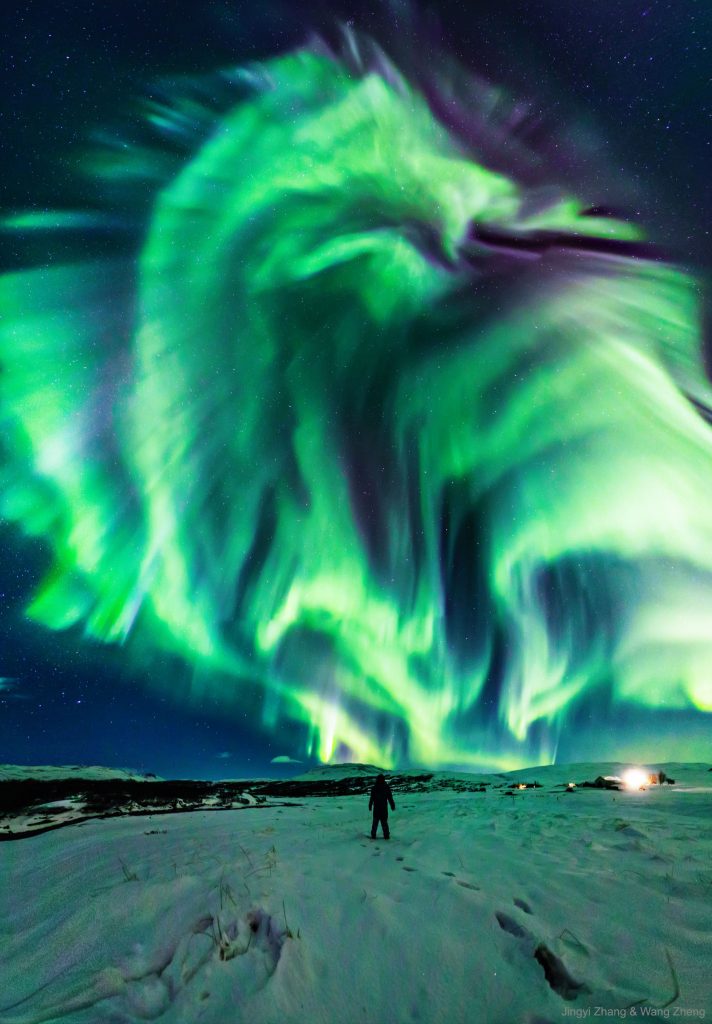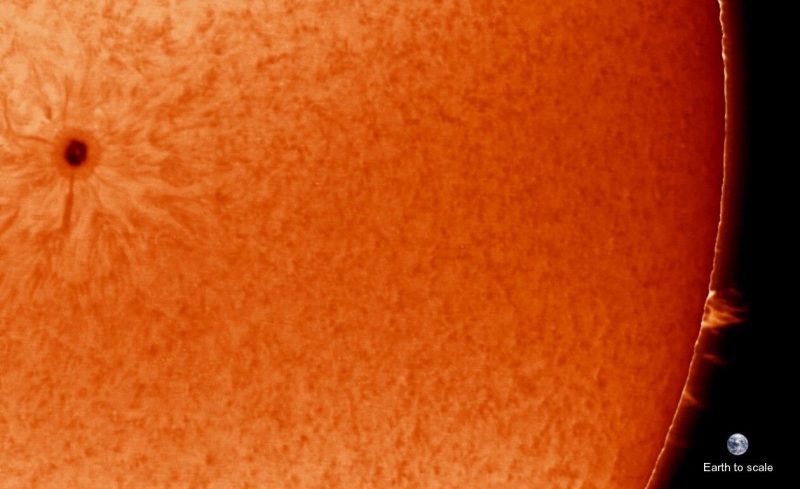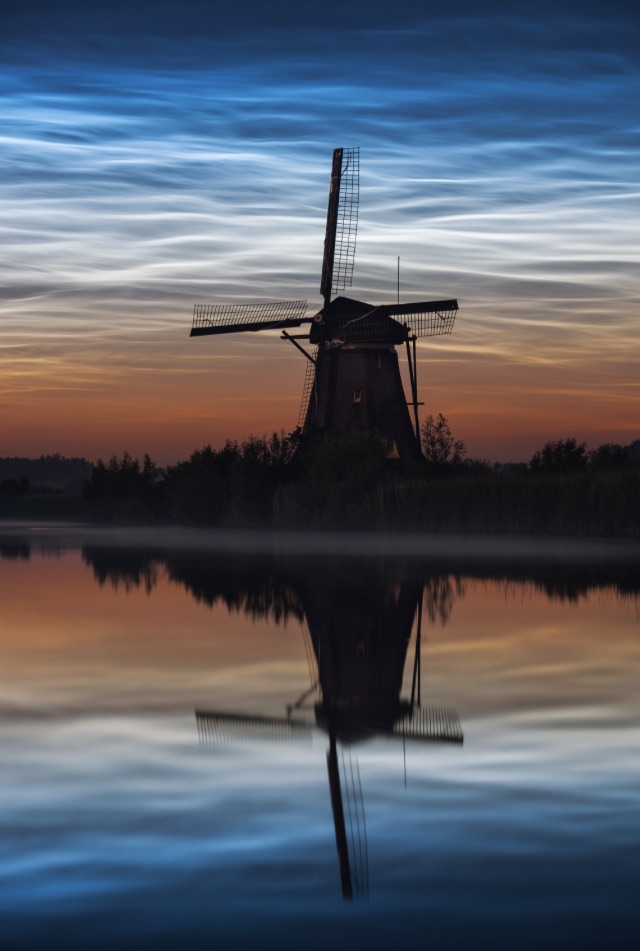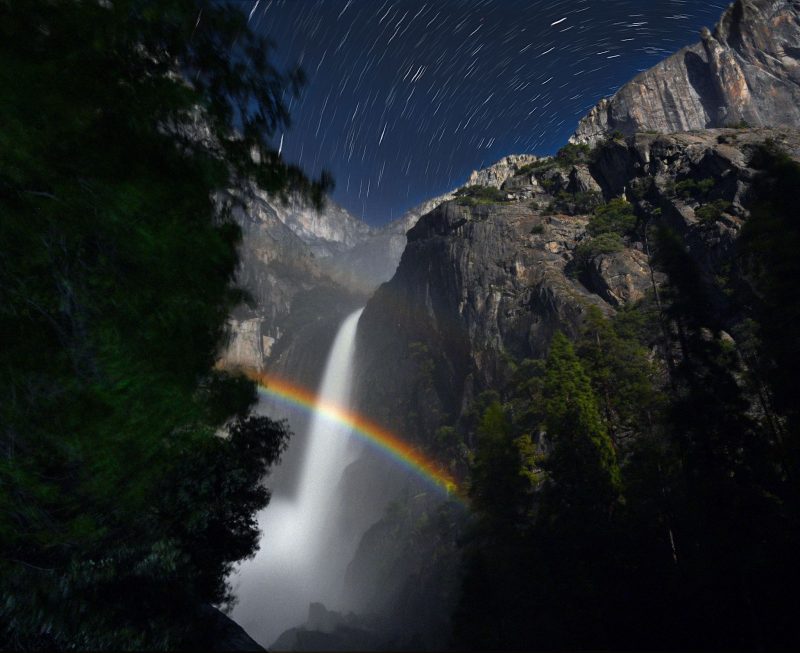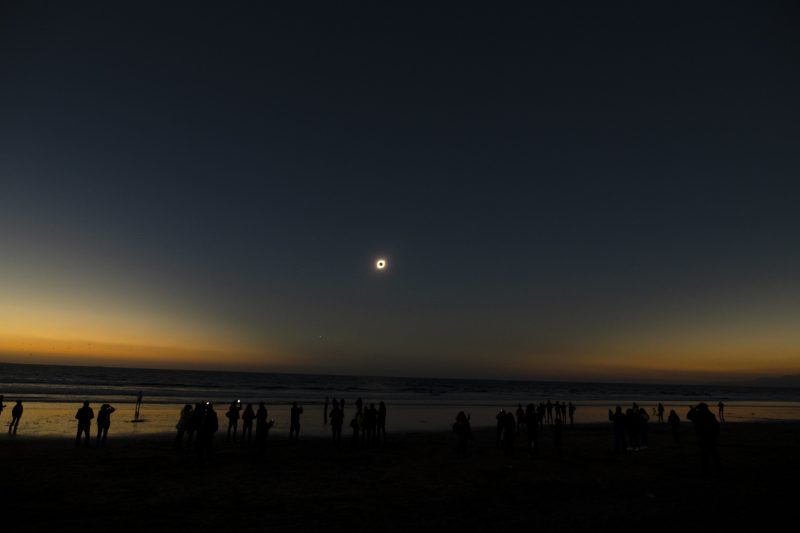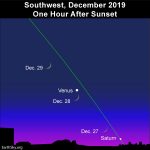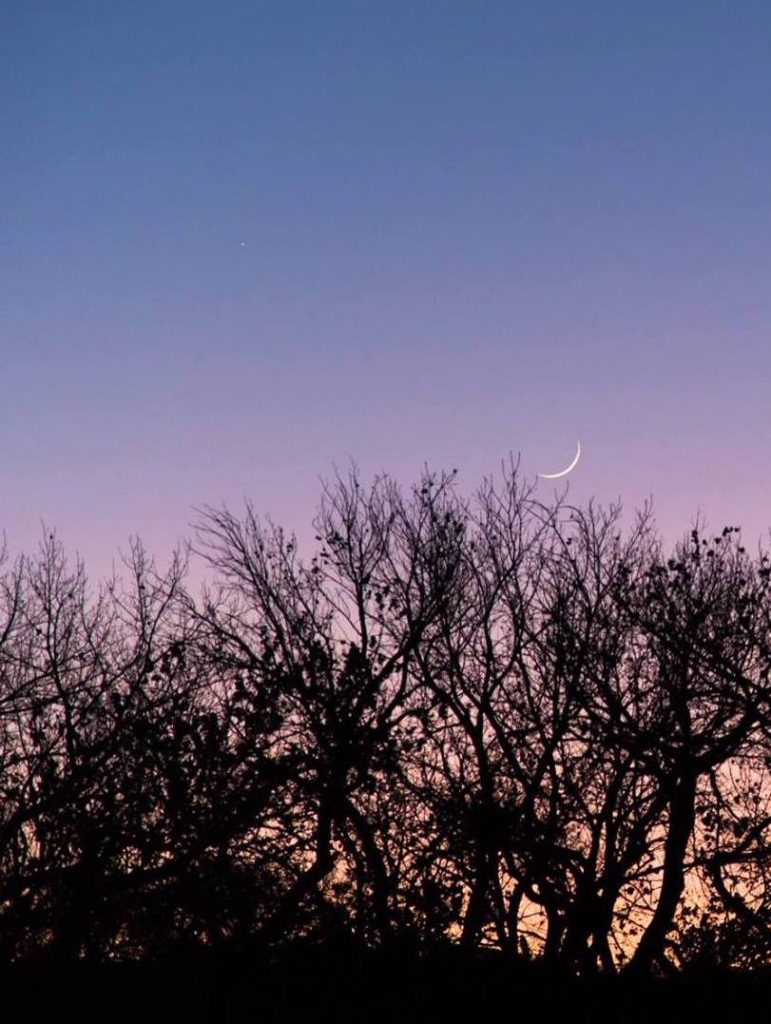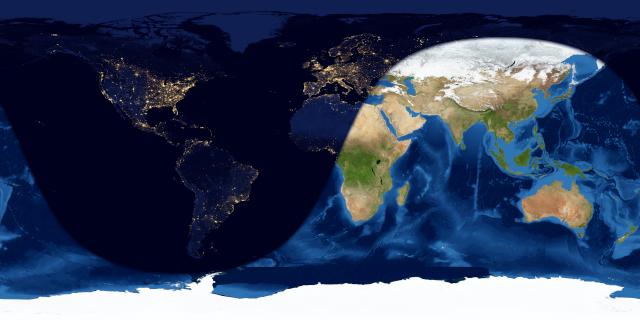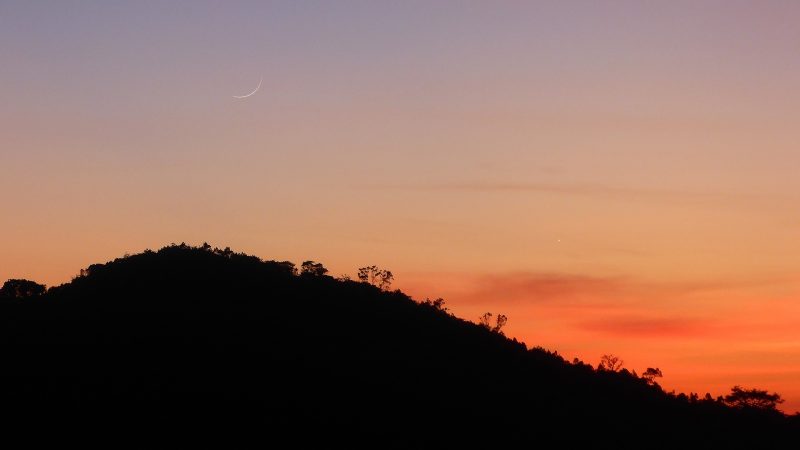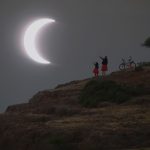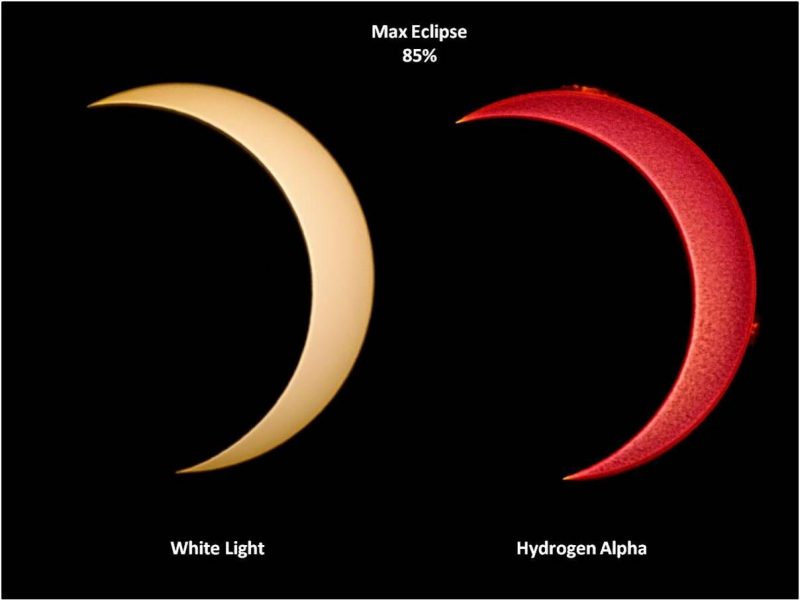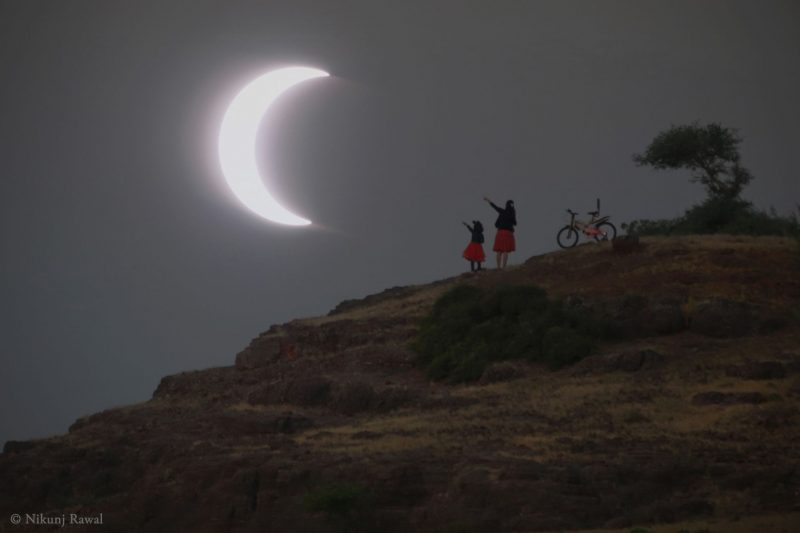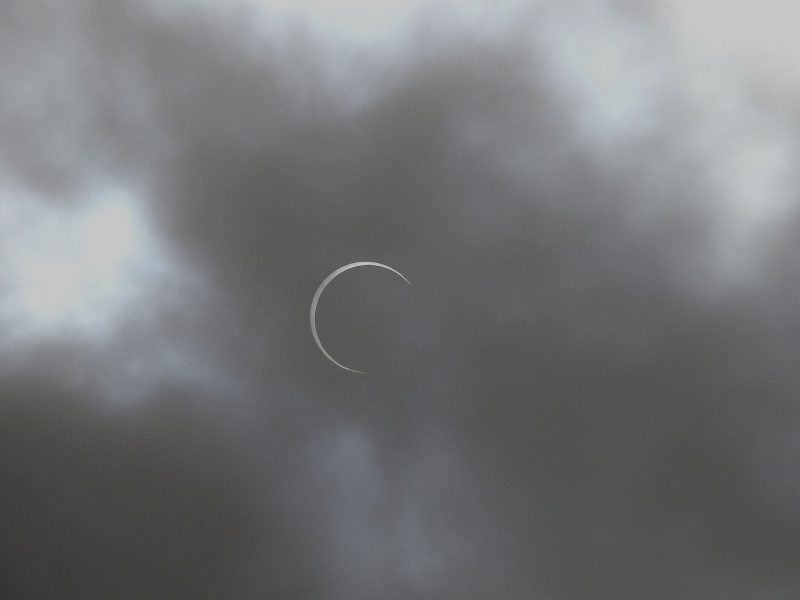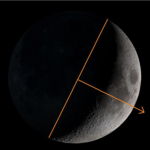
Above: Draw a straight line from one horn of a crescent moon to the other. Then from the middle of that line, between the horns, draw another straight line perpendicular to the first. The illuminated part of the crescent points to the sun. You can extend the line down to the point on the horizon roughly where the sun went down.
In late December 2019 – if you look in a clear western sky after sunset – you’ll easily spot the very bright planet Venus, along with a waxing crescent moon. There might be earthshine illuminating the moon’s darkened portion. You know, of course, that the moon changes its phase. But did you know you can tell where the sun is – even when the sun is below the horizon – just by observing the moon phase? It’s especially easy with a crescent moon up to first quarter phase.
And, once you learn to use the moon in this way, you’ll gain a lot understanding about what causes the moon to change its phase in the first place. Plus just thinking about it, each time you see a crescent moon, will add to your perception of yourself as a person standing on a world in space.
So here’s what you do. When you see a crescent moon, notice that it has two ends or “horns.”
Imagine that you draw a straight line from one horn to the other. Then from the middle of that line, between the horns, imagine another straight line perpendicular to the first (that is, at a “right” angle). Imagine that line drawn down through the illuminated part of the crescent. That line points to the sun. You can extend the line down to the point on the horizon roughly where the sun went down.
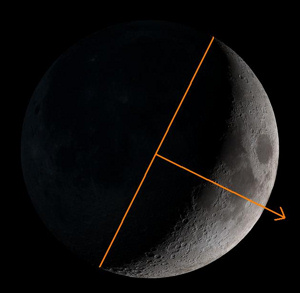
Draw a straight line from one horn to the other. Then from the middle of that line, between the horns, imagine another straight line perpendicular to the first (that is, at a “right” angle). The illuminated part of the crescent points to the sun. You can extend the line down to the point on the horizon roughly where the sun went down.
By the time the moon waxes to the first quarter phase, of course, the first line above is just the “flat” edge of the moon. After that phase, it becomes a bit harder to use the moon to find the sun’s position, when the sun is below the horizon, but experienced stargazers can and do still do it.
Why does this work? Well, it’s the sun that causes the moon’s phases. The moon is a globe in space, just as Earth is a globe. And like the Earth, the moon has a day side and a night side. The varying moon phases we see are just varying fractions of the moon’s day side. Want more about this? Try our article 4 keys to understanding moon phases.
About the moon on New Year’s Eve 2019 … it’s near the dazzlingly bright planet Venus and exceedingly faint planet Neptune.
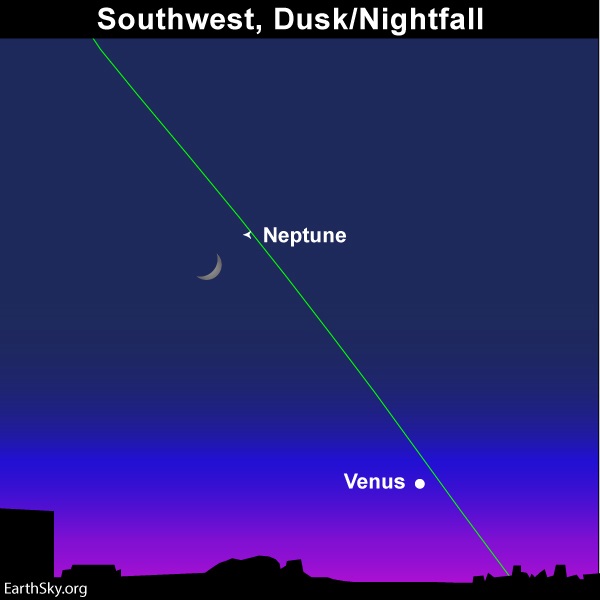
On the evening of December 31, 2019, you’ll find the moon in about this position with respect to the very bright planet Venus. The planet Neptune is near the moon in our sky on this date, but Neptune cannot be seen with the eye alone.
You’ll notice Venus right away, but you won’t see Neptune with the unaided eye. You’ll need at least binoculars to see this distant planet. Click here for a detailed sky chart showing Neptune’s location in 2019 and 2020.
Bottom line: The moon phase can point you to the sun’s location in the sky, even when the sun is below the horizon.
Read more: EarthSky’s guide to the bright planets
Easily locate stars and constellations during any day and time with EarthSky’s Planisphere.
from EarthSky https://ift.tt/2ZD92HQ

Above: Draw a straight line from one horn of a crescent moon to the other. Then from the middle of that line, between the horns, draw another straight line perpendicular to the first. The illuminated part of the crescent points to the sun. You can extend the line down to the point on the horizon roughly where the sun went down.
In late December 2019 – if you look in a clear western sky after sunset – you’ll easily spot the very bright planet Venus, along with a waxing crescent moon. There might be earthshine illuminating the moon’s darkened portion. You know, of course, that the moon changes its phase. But did you know you can tell where the sun is – even when the sun is below the horizon – just by observing the moon phase? It’s especially easy with a crescent moon up to first quarter phase.
And, once you learn to use the moon in this way, you’ll gain a lot understanding about what causes the moon to change its phase in the first place. Plus just thinking about it, each time you see a crescent moon, will add to your perception of yourself as a person standing on a world in space.
So here’s what you do. When you see a crescent moon, notice that it has two ends or “horns.”
Imagine that you draw a straight line from one horn to the other. Then from the middle of that line, between the horns, imagine another straight line perpendicular to the first (that is, at a “right” angle). Imagine that line drawn down through the illuminated part of the crescent. That line points to the sun. You can extend the line down to the point on the horizon roughly where the sun went down.

Draw a straight line from one horn to the other. Then from the middle of that line, between the horns, imagine another straight line perpendicular to the first (that is, at a “right” angle). The illuminated part of the crescent points to the sun. You can extend the line down to the point on the horizon roughly where the sun went down.
By the time the moon waxes to the first quarter phase, of course, the first line above is just the “flat” edge of the moon. After that phase, it becomes a bit harder to use the moon to find the sun’s position, when the sun is below the horizon, but experienced stargazers can and do still do it.
Why does this work? Well, it’s the sun that causes the moon’s phases. The moon is a globe in space, just as Earth is a globe. And like the Earth, the moon has a day side and a night side. The varying moon phases we see are just varying fractions of the moon’s day side. Want more about this? Try our article 4 keys to understanding moon phases.
About the moon on New Year’s Eve 2019 … it’s near the dazzlingly bright planet Venus and exceedingly faint planet Neptune.

On the evening of December 31, 2019, you’ll find the moon in about this position with respect to the very bright planet Venus. The planet Neptune is near the moon in our sky on this date, but Neptune cannot be seen with the eye alone.
You’ll notice Venus right away, but you won’t see Neptune with the unaided eye. You’ll need at least binoculars to see this distant planet. Click here for a detailed sky chart showing Neptune’s location in 2019 and 2020.
Bottom line: The moon phase can point you to the sun’s location in the sky, even when the sun is below the horizon.
Read more: EarthSky’s guide to the bright planets
Easily locate stars and constellations during any day and time with EarthSky’s Planisphere.
from EarthSky https://ift.tt/2ZD92HQ




